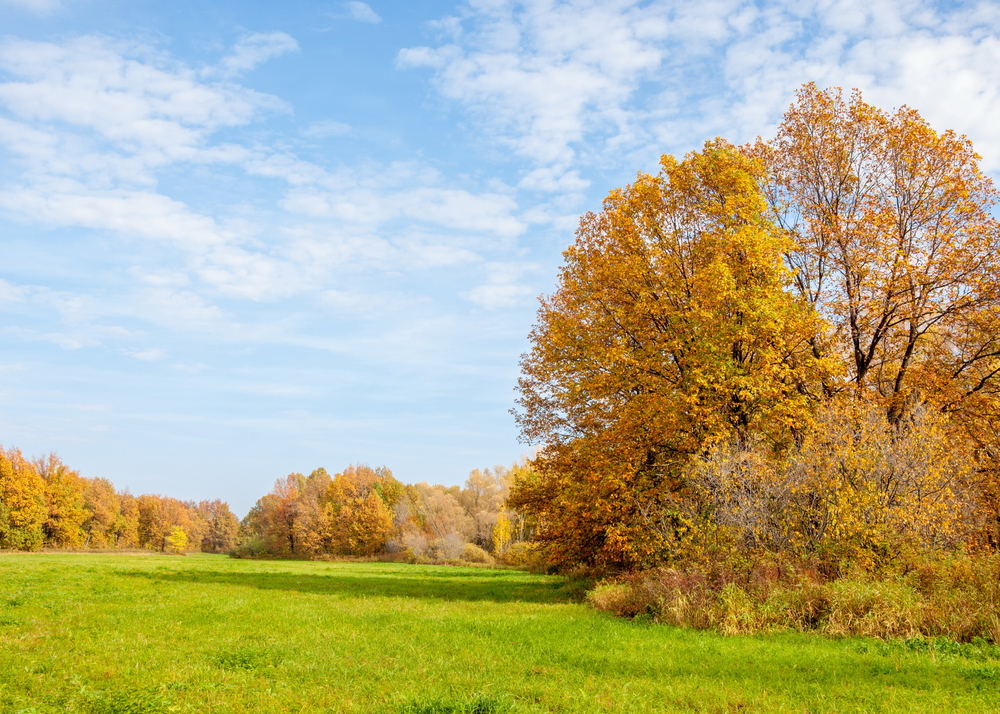Golf courses, previously expansive leisure and precision settings, are undergoing a stunning metamorphosis. The once-dominant verdant fairways and manicured greens are now giving way to vibrant ecosystems. Abandoned golf courses are being reclaimed by nature, breathing new life into spaces that were once dedicated to a sport known for its ecological footprint.
Shifting from golf to conservation
The environmental impact of golf courses has long been a matter of concern. Clearing soil to make fairways, continual watering, frequent mowing, and the use of fertilizers and pesticides all reduce biodiversity. Since 2006, the number of golf course closures has outnumbered new openings in the United States, raising concerns about the optimal use of these enormous tracts of land.
Conservation non-profits and municipal governments are leading the effort, acquiring abandoned golf courses and transforming them into landscapes that not only increase biodiversity but also act as natural climate change defenses. The Trust for Public Land (TPL)’s California state director, Guillermo Rodriguez, underlines the possibilities of this method, saying, “It’s a multiple win. You increase public access by taking former private golf courses and turning them into public properties. You return water back into rivers and streams and create a better habitat for the endangered species that we have in California.”
San Geronimo Commons: restoring northern California’s balance
Consider San Geronimo, an 18-hole course in Marin County, California, where the surrounding ecosystem was impacted by golf course construction. The acquisition of this site by TPL in 2018 signaled the start of a change. The effects of restoring the region to its original form, cutting off irrigation, and planting native species have already begun to be seen. Endangered coho salmon and steelhead trout are returning to the rivers, and bobcat sightings are increasing. The transformation of San Geronimo Commons into a vibrant community center demonstrates the success of this ecological transition.
Santa Barbara’s Ocean Meadows: embracing wetlands
Another TPL acquisition is Ocean Meadows, which is located further down the California coast in Santa Barbara. In the 1960s, this nine-hole course was developed on a wetland site. The area is currently teaming with migrating birds and threatened western snowy plovers thanks to the restoration of the wetlands, removal of the earthfill used in its construction, and planting of natural flora. The conversion of a golf course to a wetland emphasizes the importance of these natural ecosystems, especially in light of shifting weather patterns.
Rancho Cañada: protecting downstream communities
Rancho Cañada, a 190-acre private golf course in Monterey, is another TPL project. The effort helps safeguard downstream areas from flooding by repairing the riverbed and banks of the Carmel River, which runs through the course. The incorporation of this property into a larger network of protected land creates an important wildlife corridor, significantly improving ecological interconnectedness.
Summit Metro Parks: an Ohio model
Summit Metro Parks, based in Akron, Ohio, purchased the 195-acre Valley View Golf Course in 2016, embarking on an ambitious project to restore the site to its natural state. This project effectively linked three local parks, resulting in a 1,900-acre green space expanse. “Prior to our work, we documented about 200 species of plant and wildlife that were living on the golf course at the time we acquired it,” says Mike Johnson, Chief of Conservation at the organization. “Today we have documented over 900 species of fish and wildlife that have returned to this area.” Golf course rewilding has an undoubtedly significant impact on local ecosystems.
Frodsham, UK: a growing movement
The movement to rewild golf courses is not limited to the United States. In the United Kingdom, the Woodland Trust purchased the Frodsham golf course in Cheshire, with plans to plant 40,000 native trees on the property. Early signs of recovery are seen, with wildflowers emerging while fairways, greens, and tees remain unaffected. This project contributes to The Northern Forest scheme, which aims to plant 50 million trees across 10,000 square miles in order to raise woodland cover from 7.6 percent to 20 percent.
Local councils in the United Kingdom are also revamping unproductive municipal golf courses in order to create more natural spaces. Erewash Borough Council is working with Derbyshire Wildlife Trust to create a nature reserve on the Pewit golf course. Brighton and Hove City Council is restoring chalk grasslands by rewilding the 220-acre Waterhall course.
Elsternwick Park: Melbourne’s natural oasis
Elsternwick Park golf course in Melbourne’s Brighton district has been turned into a natural oasis, providing refuge for wildlife and the local population. Bayside City Council launched this shift by establishing a variety of ecosystems, ranging from open water to wetlands and woodlands. Over 100 native plant species have already returned to the site, and a network of trails allows visitors to explore and learn about the urban environment. The site has been renamed Yalukit Willam Nature Reserve to honor the Indigenous owners of the land and to demonstrate the potential of repurposed golf courses.
A harmonious future for golf courses and nature
As abandoned golf courses find new life in the conservation realm, they represent a trend toward more sustainable land use. These reclaimed spaces not only improve the environment, but also provide opportunities for recreation, education, and connection with nature in communities. With climate change issues looming, converting golf courses into natural havens is a realistic and imaginative solution for protecting our planet’s biodiversity and increasing its resilience.












